|
Tiny Tim Rocket
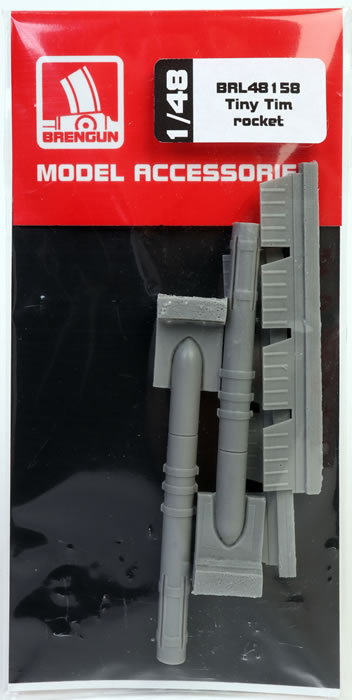
Brengun, 1/48 scale
S u m m a r y : |
Catalogue Number: |
Brengun Item No. BRL48158 - Tiny Tim Rocket |
Scale: |
1/48 |
Contents & Media |
Ten grey resin cast parts and instructions. |
Price: |
13.07 € plus shipping available online from Brengun
£11.75 UK Price (£9.79 Export Price) plus shipping available online from Hannants
and specialist hobby retailers worldwide
Click here for currency converter. |
Review Type: |
First Look. |
Advantages: |
Clean, moulding with great detail of an early rocket used by the US Forces. No seams to clean up, accurate shape and simple assembly. |
Disadvantages: |
None noted. |
Conclusions: |
A very detailed set of Tiny Tim rockets used in late WWII not offered in any kits I know of. They’ll certainly look impressive under the wings of you US aircraft. |
Reviewed by David Couche

The Tiny Tim was an American air-to-ground rocket used near the end of the Second World War. It was built in response to a United States Navy requirement for an anti-ship rocket capable of hitting ships from outside of their anti-aircraft range, with a payload capable of sinking heavy shipping.
The Tiny Tim was manufactured using 11.75-inch (298 mm) pipe, which was chosen because it was already being manufactured. Used oil field 11.75-inch pipe was acquired for the prototypes. Also, the 11.75-inch size was of interest in the development because there was already available a 500-pound semi-armour-piercing bomb that was adaptable for use as the warhead for the rocket. One of the rocket project scientists commented on the shortage of the piping “. . . we were reduced for a time to the expedient of salvaging (oil-well casing) from abandoned oil wells.”
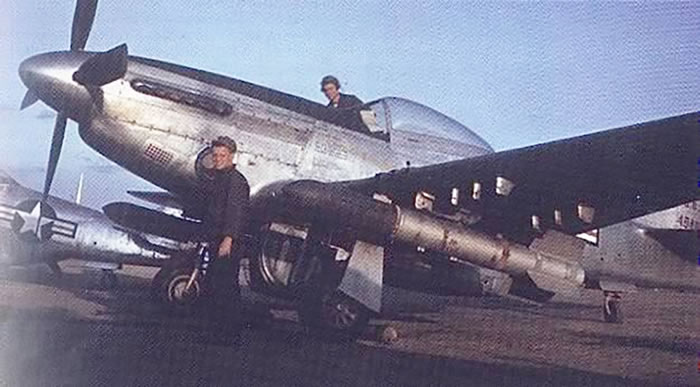
The Tiny Tim's diameter of 11.75 in (29.8 cm) was the first Allied aerial rocket to have a larger calibre than the Luftwaffe-deployed bomber destroyer aerial rocket ordnance, the Nebelwerfer-based BR 21 of 21 cm (8-1/4 in) calibre. The Tiny Tim's large diameter allowed a sizable 148.5 lb (67.4 kg) semi-armour-piercing high-explosive warhead, some 60 lbs (27 kg) heavier than the BR 21's 40.8 kg (90 lb) warhead. The Tiny Tim had a maximum range of 1,500 meters (1,640 yards), some 200 meters greater than the BR 21's time-fuse limited 1.2 km detonation range from launch.

They were used by the United States Navy and United States Marine Corps near the end of the war during the battle of Okinawa, and during the Korean War. A problem with the sheer power of the rocket motor causing damage to the firing aircraft was resolved by having the Tiny Tim drop like a bomb, and a lanyard attached to the rocket would snap, causing the rocket to ignite. Common targets included coastal defence guns, bridges, pillboxes, tanks, and shipping. An ambitious operation to use the Tiny Tim against German V-1 sites as part of Operation Crossbow, code-named Project Danny, was planned but cancelled before the squadrons assigned could be deployed to Europe.
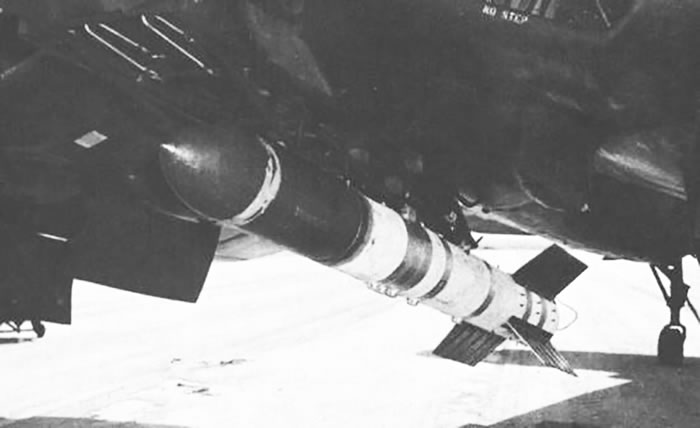
Common Tiny Tim delivery aircraft during World War II included the PBJ-1 Mitchell, F4U Corsair, F6F Hellcat, TBM Avenger, and the SB2C Helldiver.
*Text from Wikipedia
The Tiny Tim Rocket set is supplied in a cardboard backed plastic bag. The 10 resin pieces are on 3 resin cast blocks, the first having the 2 rocket bodies which are cast fault free and with lovely crisp detail.
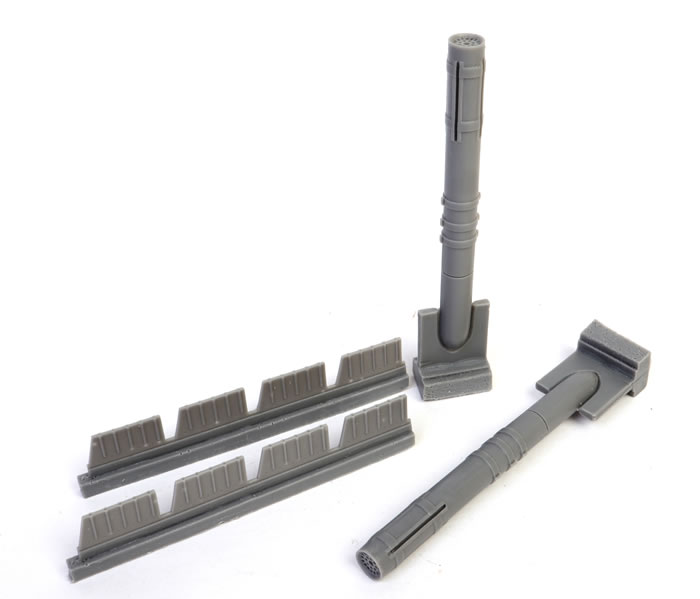
A very fine attachment line is around the nose of the rockets and after removal will need only minimum clean up.
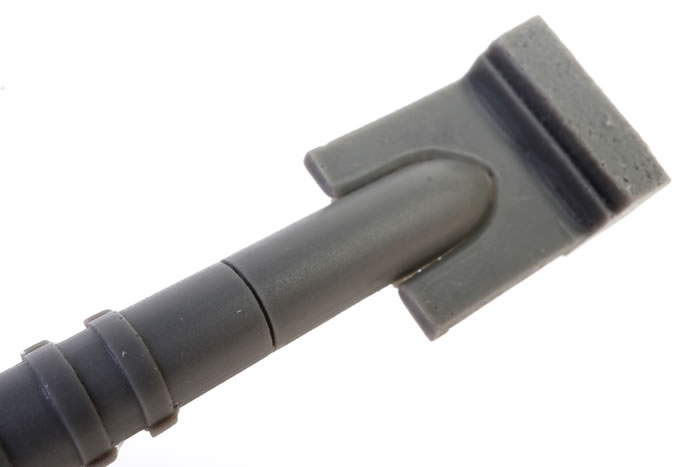
There are no seam lines where the great body detail is. The other 2 blocks are the duplicates of the large rear fins. Again, no obvious casting flaws and really nice detail. Removal from the block is along a straight line, making clean up easy and then the fins go into recesses around the body for positive location.
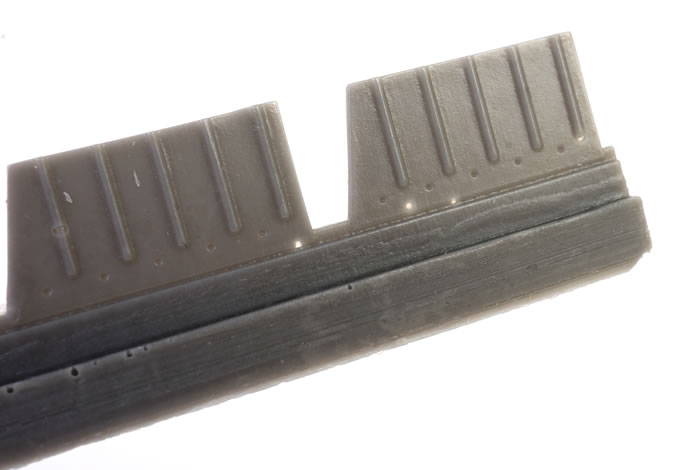
The instructions are on a small sheet with only on step in their construction.
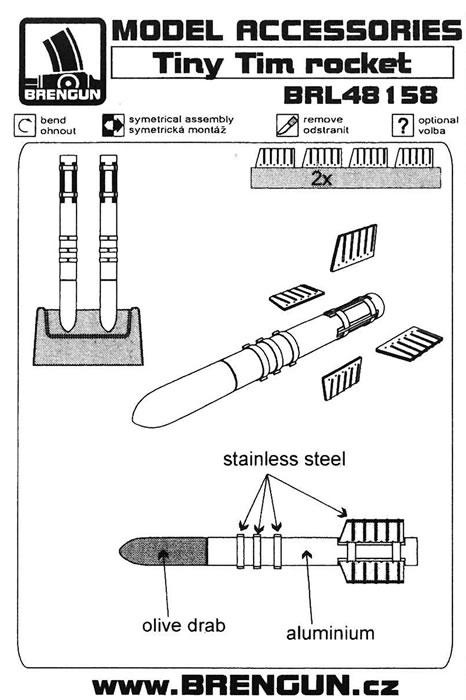
There are generic paint call outs on it but these shouldn’t be a problem with only olive drab, aluminium and stainless steel used. The Tiny Tim’s had no stencil on the so no need of a decal sheet.
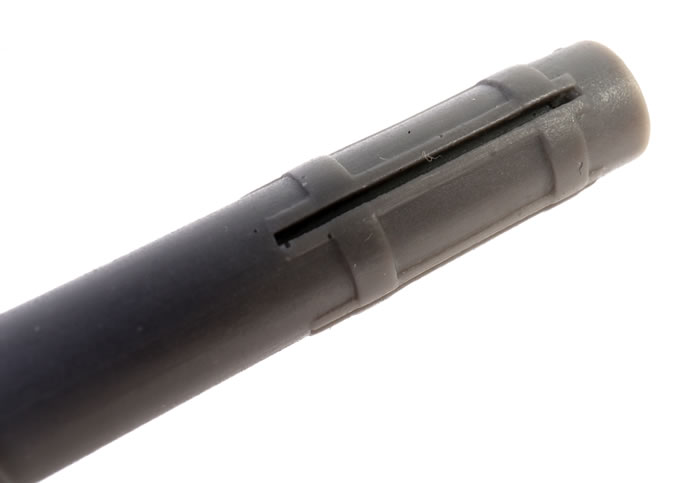
After all of the superlatives above, now for the issue. This is not a great one but will need dealing with and that is that there is no mention of the mounting/launching pylon. It was not used with the typical WWII rocket stub mounts but more along a more modern weapons pylon. The only photograph I can find so far is the one above on a F4U Corsair although the Mustang above appears to have it mounted on stubs.
Check your references.
The Brengun Tiny Tim rocket set will certainly add some quality detail to your models and provide a rarely sighted (on a model at least) rocket of impressive size (refer to Mustang photo above). I will be looking at using this set on a future build, more than likely on the SB2C Helldiver. I would recommend this set for the great detail, ease of construction and for the less commonly seen aspect .
Thanks to Brengun for the review sample.
Review Text Copyright © 2022 David Couche
Images Copyright © 2022 Brett Green
Page Created26 April, 2022
Last updated
26 April, 2022
Back to HyperScale Main Page
Back to Reviews Page |
